One of the most popular saltwater fish is the clownfish. You can find them in the warm waters of the Pacific Ocean, the Red sea, the Indian ocean and of course, in the classic cartoon Finding Nemo.
Besides the popular TV appearance, clownfish are mostly recognized by their vivid orange and red striped colors and unusual visuals. But the attraction and appeal of clownfish is not just limited to aesthetics. Clownfish’s symbiotic relationships with sea anemones are one of their most intriguing behaviors.
Still, just like any other animal, food majorly influences its health and in turn, its appeal. Hence, it’s no surprise that any beginner fishkeeper will have these questions in mind: what do clownfish eat in their natural habitat? What should you be feeding clownfish in the aquarium? How often should you feed them?
If you’re here to seek answers to any of these questions, then you are in the right place. This article will answer all these questions and many more to come. As a bonus, we’ll also dish out some really good clownfish feeding tips.
Contents
So What Do Clownfish Eat?

The clownfish have a symbiotic relationship with the sea anemone, where the anemone tentacles provide food for the clownfish. By leaving some feces for their hosts to devour, the clownfish also helps the sea anemone by giving healthy nutrients.
The clownfish can locate and eat food in a relatively quiet environment thanks to their intriguing living circumstances.
All clownfish should be fed in an area without a high-water flow to make feeding easier. But note that you must feed Juvenile clownfish close to their “safety zone.” So, all must give your orange clownfish more food on a regular timetable and a varied diet with all the needed nutrients.
So in the following sections, you discover what the clownfish natural diet entails. But keep in mind that clownfish have a pretty varied diet.
Also read these other popular posts:
What Do Clownfish Eat in their Aquarium Life?
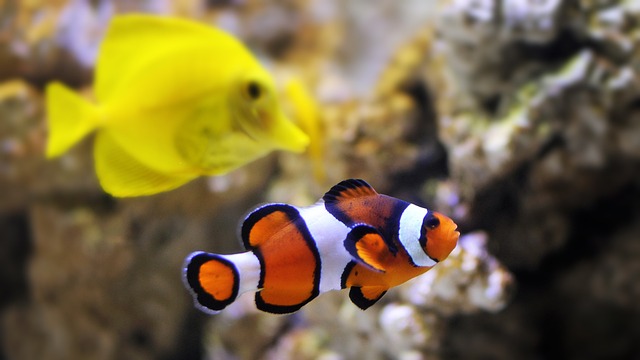
Together with other Pomacanthidae family members, the orange clownfish, also called the Ocellaris Clownfish, currently accounts for more than 40% of the global ornamental fish trade due to overharvesting from their natural habitats.
Some regions of the world have nearly wholly lost their clownfish species due to the purposeful separation of clownfish from their habitats.
Instead, they reside in private aquariums where they are rarely allowed to reproduce, depriving their natural habitat, particularly the sea anemones, of the advantages of their existence.
Clownfish are usually separated from the anemone that provides them with food when they are kept in aquariums, where they lose access to many foods they typically consume in the ocean.
Any fish food will work for the clownfish diet as long as it has all the nutrients required. But variety is the important word here.
You want to provide your clownfish with a varied diet containing nutrients from plants and animals. If not, they may suffer from vitamin or mineral shortages that could eventually be fatal.
A few suggested foods are varieties of live food like brine shrimp, cooked mussels, vegetables, bloodworms, table shrimp, etc. You can also prepare homemade fish foods by combining a few food items. Clownfish require some live fish food in their meal to survive.
The fact about clownfish is that they have such a varied diet, and they give you several ideas on what to feed clownfish.
1. Frozen Foods
Start with frozen food if your clownfish won’t eat what you’re feeding. Frozen foods are an excellent way to introduce your clownfish to new flavors because they are almost always unfamiliar.
The most typical sort of frozen food supplied to clownfish is frozen bits of seafood like small frozen fish, although there are also frozen shrimp, krill, and squid.
As long as you change what you feed them, frozen food, live foods, and plants are all the best food options.
Clownfish may go for up to a few days without feeding, but if you don’t give them enough food that gives them the nutrients and calories they need to survive, they will starve to death.
These fish foods can be defrosted using one of two techniques. The first option is to leave it in your refrigerator overnight to defrost and be ready to eat the next day gently.
Another choice is to place the meal in a Ziploc bag and immerse it in a bowl of ice water for approximately an hour. Keep the faucet partially open to keep the water consistently cold and from heating up, which will stop the food from going bad.
2. But Do Clownfish Eat Brine Shrimp?
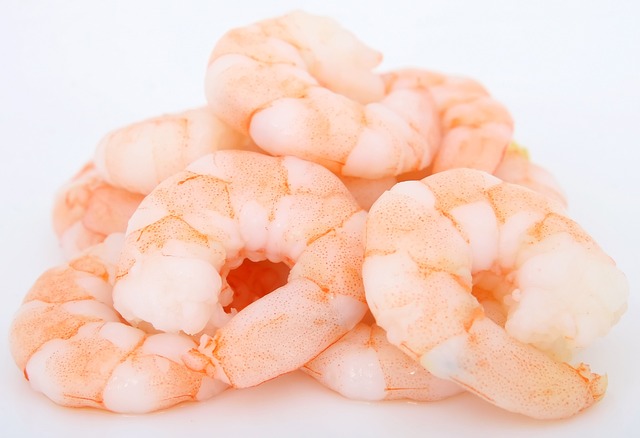
The clownfish is one of the few tropical fish that can be fed fish flakes diet. A clown fish’s diet is varied in the environment, which also suggests that the animal may thrive if people attempt to mimic its natural diet as closely as possible.
The simplest way to do this is to provide the fish with meat meals like brine shrimp and krill while simultaneously ensuring they get daily algae.
The small crustaceans class known as brine shrimp also goes by artemia and sea monkeys. Their skeletal structure resembles shrimp.
You’ll need to set up a small storage tank because brine shrimp are occasionally served in massive amounts at one feeding. Freshwater and saltwater fish can enjoy defrosted brine shrimp as an upscale snack.
These can also be found in most fishing and online pet stores. In addition, protein-rich brine shrimp make a nutritious dish.
3. Fish Pellets
Fish pellets are the best feeding options for clownfish in aquariums. These supply all they require for healthy growth and success.
Depending on what you’re looking for, fish pellets also contain nutritional supplements, including antioxidants, vitamins, minerals, color enhancers, and other nutrients. These supplements have advantages like increased growth rates, better pigmentation, and disease resistance.
Because they contain all that saltwater feeding needs to grow healthily, fish pellets are what most marine fish breeders use for feeding. Therefore, these should be the primary foods provided to clownfish. However, giving baby clownfish access to different foods is equally crucial.
However, fish pellets may not be ideal for breeding clownfish since they will need a wide variety of food in their clownfish tank.
4. Fish Flakes
Fish flakes, like pellets, are a complete meal with a nutritionally balanced composition that gives your clownfish everything it needs to survive.
Fish flakes’ most significant disadvantage is that they quickly begin to decompose, contaminating the water in your tank or aquarium. However, difficulties caused by it can be avoided by adding fewer flakes and changing the water filters periodically.
If your clownfish are interested in vegetables, seaweed sheets (nori) and the occasional algae tab will work well.
But if you’ve only recently added a new clownfish to your tank, don’t panic if they initially show no interest in eating. Instead, allow them a few days to adjust before continuing to attempt every day.
What Do Clownfish Eat in the Wild?
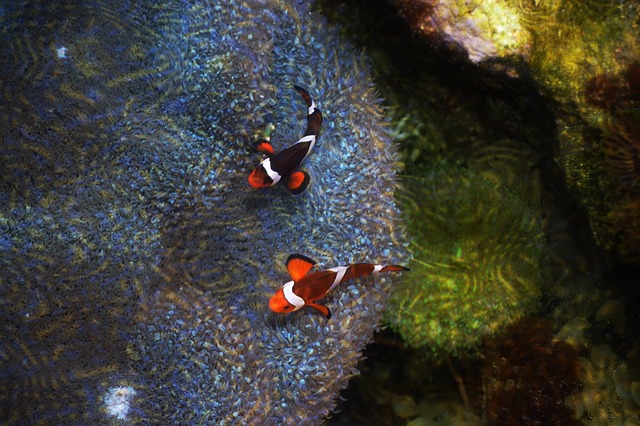
Clownfish are omnivores, so they primarily feed on anything in the wild. Although the individual zooplankton or phytoplankton that clownfish prefer to consume may not be very nutritious, copepods and other zooplankton make up most of their food.
They also like to eat small animals, plants, and algae. Clownfish and anemones have a symbiotic relationship that helps to guarantee the clownfish has enough food. They frequently consume uneaten food scraps after anemone’s meals.
By attracting other fish with their vibrant colors, clownfish support their host anemone. Toxin from the anemone kills these fish, and the leftover food becomes the clownfish meal.
Occasionally, a tiny shrimp will float by so that they can eat on their own. Other times, they will wait for the sea anemone to kill one of its prey before eating the remaining parts.
Clownfish rarely leave the anemone since doing so causes them to lose their defenses. However, they will occasionally go hunting plankton and algae on the surface of a neighboring reef.
They primarily consume plankton and algae to live. Known as “plankton pickers,” these fish identify and selectively target plankton drifting in the nearby water before eating it.
This contrasts with filter feeding, which involves filtering a large volume of plankton through the mouth to get the needed nutrients.
When they see one of their preferred foods floating in the water column, they may temporarily leave their protected area to retrieve the food.
They are incredibly opportunistic organisms who profit from having anemones to ward off predators rather than being great hunters.
They Also Eat Fish Eggs and Fry
While clownfish will consume fish eggs, they do not destroy their own. However, in rare occasions where the parent needs strength, they are forced to eat eggs and smaller fish for extra strength.
How Often and How Much Food Do Clownfish Eat?
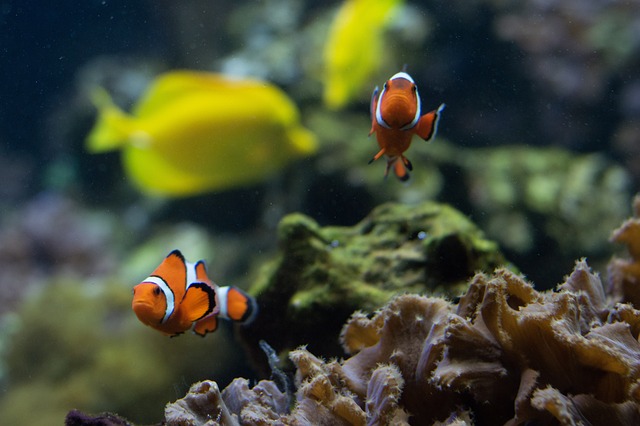
These species are voracious eaters, so don’t fall for the clownfish grovel tactics regarding quantity. Your clownfish will become used to seeing you as their food source and eventually start interacting positively with you!
It’s crucial to keep in mind that fish don’t require that much food and that overfeeding can affect the water’s quality. Also, note that it is easier to add more food to the aquarium than it is to remove excess food.
The eyeball method, which involves feeding roughly as much as the size of the fish’s eye per day, is a typical strategy for calculating how much to feed.
That entails a few pellets or pieces of frozen meal per fish. Reduce the portion size in half if you feed frequently.
With just two meals every day, adult clownfish can survive just fine. However, due to their fast growth rate and fast digestion, small and juvenile fish need 3–4 meals daily.
You want to offer your fish a healthy, balanced diet without overfeeding them. Since unskilled reef aquariums sometimes let the fish establish the feeding schedule, this is easier said than done.
It should be the other way around. Depending on the size, age, appetite, and food type of your clownfish, you should figure out how much it enjoys eating.
Except if you have a lot of clownfish or they are large enough to need more regular feedings, only feed your clownfish twice a day. Nevertheless, you should only feed your clownfish three times daily.
There are two eating periods for clownfish: an active phase and a resting phase. They eat more each day when they are active.
Their habitat, level of activity, and other things like stress levels or temperature fluctuations affect the amount and frequency of each meal.
But above all, overfeeding your clownfish is already a bad idea even before you start.
Below are some of the conditions that may arise as a result of feeding clownfish with excess food:
Higher Algae Growth and Unfavorable Smell
If food waste builds up in the tank, the algae species will be fed more, resulting in an environment-overrunning with a higher level of algae in the aquarium.
Besides that, the bacteria overgrowth brought on by the decomposing food will make the aquarium unhealthy for your clownfish.
The extra food will settle into the tank’s bottom and start to spoil. Some rocks or gravel will even pass through the substrate particles if you have rocks or gravel.
The food remnants will swiftly decay away and release ammonia and nitrites too strong for the filter to remove. Ammonia is lethal to all aquarium fish, including clownfish, as you may already be aware.
Intestinal Problems
An overfed clownfish is frequently prone to having health issues like constipation because it cannot process the food quickly enough.
Since their senses drive them to consume as much food as possible, most fish cannot understand when they should stop eating.
The fish will exhibit this instinctive behavior to maximize their chances of surviving in the wild, but it will present issues in captivity when food is abundant.
Food Types to Keep Away from Your Clownfish
The fact that clownfish are voracious eaters does not mean you can throw anything in their aquarium as food. In the same way, overfeeding is not suitable for them, so some food types are not friendly with their system.
So here are some food types you should not administer to your clownfish:
1. Certain Live Food Types
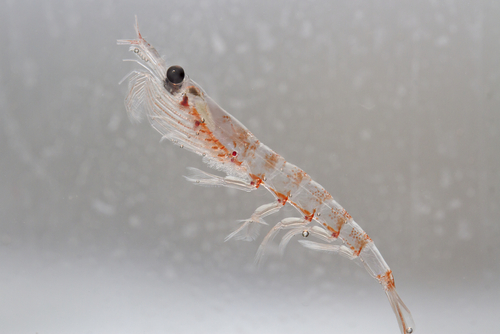
This is a typical issue for novice fish keepers who believe that natural also equates to healthy. This is blatantly false. Many things in nature may be dangerous to humans, and the same is valid for fish.
It may quickly go wrong if you feed your clownfish different worms, insects, and fish you’ve collected in the wild. Most wild fish, worms, and insects carry germs and parasites that will swiftly spread to your clownfish.
Also, they will become constipated from overeating protein, leaving them with a lot of work. So give them protein-rich foods around twice a week.
You may give your clownfish animal protein daily if you provide it to them in moderate amounts and always combine it with vegetables.
2. Poor or Outdated Food Items
If the food is old, germs might have grown there that would be fatal to your clownfish. If the food’s expiration date has passed, discard it.
If the food seems or smells strange, indicating it’s inappropriate for ingestion, you should take the same action. This poor and outdated food is a poor choice. Food isn’t necessarily beneficial for fish just because it’s excellent for humans, so food bad for humans also will be bad for your clownfish.
Also, ensure to feed your fish only additive and synthetic colorant-free meals to avoid harming them.
How to Feed Your Clownfish
They only need to scatter their meal on the water’s surface for it to be promptly collected.
Clownfish aren’t particularly pompous in this regard; they often take food from the water’s surface and gather food particles that are sinking. To ensure that all clownfish in the tank eat, spread the food evenly throughout the water’s surface if there are many.
Although clownfish aren’t particularly hostile, they will battle for the privilege to feed, mainly because they have a set order.
Clownfish are susceptible to poor or inappropriate food. They’ll either reject it or eat it and then have health issues. As a result, the quality of the meal in the aquarium is vital to feeding clownfish.
What Predators Eat Clownfish?
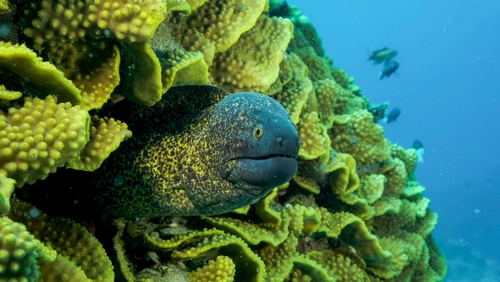
Sadly, people are also damaging the reefs where clownfish live and have been eradicating the fish species, decreasing the amount of anemonefish in the ocean.
Although the long-term effects on the fish species are still unknown, people are the most significant predators of clownfish.
Clownfish aren’t very well-equipped to fend off aquatic predators. Small and slow-moving, they are the ideal meal for larger predatory fish. As a result, it will likely be preyed upon by any predatory fish that is quicker and larger than clownfish.
The anemone is their best form of defense. While racing into the anemone in search of clownfish, a predator might learn a painful or fatal lesson. But they may also occasionally catch the clownfish.
Aside from human activities, some of the carnivorous predators that feed on clownfish include:
- Barracudas
- stingrays
- Eel
- Great white shark
Bottom Line
The clownfish is a distinctive and intriguing fish that doesn’t require a lot of specialized care to flourish. The only genuine concern you should have is if they are eating enough.
However, you should be able to deduce the nutritional requirements for clownfish from the above information and the precise foods you should give them.
A diversified diet is crucial to ensure that clownfish in an aquarium receive all the nutrients they require. Although clownfish are not in danger of extinction, habitat degradation and exploitation are thought to make them a vulnerable species.
We hope this article has helped you to know what is best for your clownfish.

Ian Sterling, founder of Fishlab.com, began his aquarium journey over 30 years ago, driven by a deep fascination for fish and their diverse personalities. His website, Fishlab.com, is dedicated to making fishkeeping accessible and enjoyable, offering beginner-friendly guidance, expert insights, and a community for aquarists to connect and share experiences.


